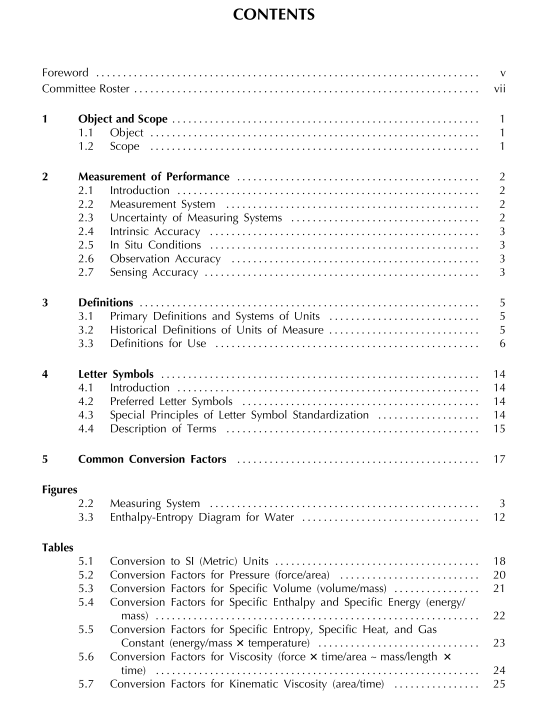ASME PTC-2 pdf download

ASME PTC-2 pdf download DEFINITIONS AND VALUES
2.1 INTRODUCTION The Codes provide test procedures which yield results of the highest level of accuracy consistent with the best engineering knowledge and practice, taking into account the cost of tests and monetary value of efficiency to industry. Performance of equip- ment is determined in part by measurements of physical quantities. A measurement consists of sens- ing a physical variable and translating this result into data that is either indicated or recorded. Analog data are indicated by the position of a pointer on a dial or by a point or line on a chart. Digital data are indicated by a visual display of numbers or by a numerical printout. Devices used to make measurements are called instruments but many de- vices called instruments must be used with additional components to measure certain physical variables and quantities. A millivoltmeter, for example, can measure voltage but a thermocouple must be used in conjunction with the voltmeter to obtain a temper- ature measurement.
2.2 MEASUREMENT SYSTEM In order to make a measurement of a physical quantity it must first be sensed, and the information about the energy change due to sensing must be transmitted to a component that communicates the data. The requirements for measurement are met by the system shown in Fig. 2.2. The primary element is that part of the measure- ment system that first senses the variable to be measured. The energy change produced by the sens- ing must be transmitted to an information-communi- cating unit where it may be used directly or changed (transduced) to some other form to indicate or record data. The measurement system may be very simple or very complex but the three functions appearing in Fig. 2.2 are required to make a physical measure- ment. The measurement system may be a single component such as a liquid-in-glass thermometer where the sensing is done by the bulb, the transmit- ting by the liquid column, and the data display by the scale. On the other hand, the measurement system may be multi-component such as flow mea- surement with orifices where the primary element (the orifice) causes fluid acceleration to produce a pressure differential which is transmitted via tubing to a manometer where the data are displayed on the scale.
2.3 UNCERTAINTY OF MEASURING SYSTEMS Measurement of a physical quantity never continu- ously gives a result which is correct in an absolute sense. The numerical value determined nearly always differs by some amount from the true value, and the extent of the deviation (called error) depends upon the type of measurement system used. Code writers and test engineers must demonstrate that the test measurements used will provide results suffi- ciently accurate to accomplish the purposes of the test. The accuracy obtainable for a given measurement is dependent upon the following three components:
(a) the characteristics of the measured quantity,
(b) the accuracy of the observation, and
(c) the measurement system used.
(1) The intrinsic accuracy of the measurement system.
(2) The in-situ conditions of its use.
Item (c)(1 ) is generally well treated by most engi- neers and data concerning measurement system components is given in the Instruments and Apparatus Supplements. Item (c)(2) is often responsible for gross errors of measurement. Specific analysis is necessary for each application and installation. ASME PTC 1 9.1 , Test Uncertainty, defines accu- racy as the closeness of agreement between a mea- sured value and the true value; erroras the difference between the true value and the measured value; and uncertainty as a numerical estimate of the error.
2.4 INTRINSIC ACCURACY
The intrinsic or inherent accuracy of a measurement system depends upon
(a) materials,
(b) construction, and
(c) physical condition at time of use.









